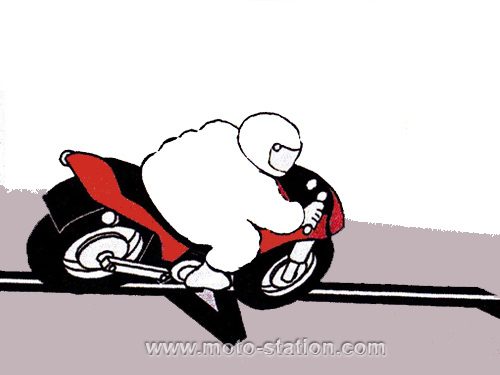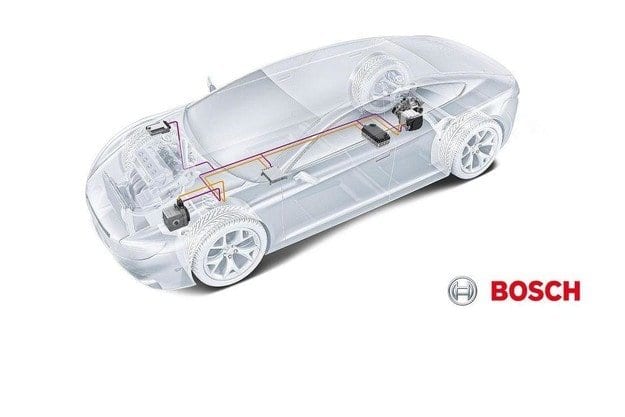Specialty motorcycle tires: guide, definition, causes and remedies
Content
Continuation of our report dedicated to the world of motorcycle tires and chassis. After shimmy and darts, today we look at the famous motorcycle handlebars. A phenomenon of violence that can lead to falls, steering is an obsession for any biker or pilot who has ever encountered it… Here are some explanations and solutions to prevent it or – at the very least – reduce it.
The term "motorcycle handlebars" is often misused or misused. The steering wheel is very often confused with shimmy or impetuous while these are three very different phenomena, the leadership of which is by far the most brutal. To try to give a simple definition of a motorcycle steering wheel, we can say that it is a one-time reaction leading to a sharp movement of the motorcycle steering around the axis of rotation. Steering usually occurs during acceleration when the front wheel pressure is slightly reduced. Very often this occurs as a result of an impact between the tire surface and the ground, or even as a result of an impact at the level of the rear tire, which is reflected in the direction of the motorcycle. Note that very "closed" geometry - short wheelbase and closed steering angle - increases the risk of steering on sports cars and other muscular roadsters.
Steering is not progressive, like swaying, but on the contrary, the movement of the rudder from stop to stop is very hard, takes a few tenths of a second, and can really knock the pilot down and cause a fall. Although the knee-jerk reaction is to “grab branches,” most flight school instructors advise against grabbing the steering wheel. The idea is to let the bike run its course, its natural stiffness (especially on sports cars) allows the wheels to self-adjust. The more daring even recommend maintaining a slight acceleration at the beginning of the steering to avoid new impacts between the ground and the tire and thus stop the rebounds. It's always easy to say...
Motorcycle steering wheel: causes and remedies
Leadership reasons are often external, usually motorcycle acceleration on the road in poor conditionbut can also come largely from a motorcycle. Particularly on a sports car, a poorly adjusted fork (severe disparity between compression and rebound) or poorly maintained (lack of oil, worn springs) can cause this phenomenon earlier. Likewise, steering can be caused by an equally poorly adjusted or imperfect rear suspension. Therefore, it is appropriate in the first place inspect the pendants to make sure they are fixed if necessary (replacing oil, seals or springs, or even simply replacing a tired rear shock absorber (s)), and view settings. Typically, on the road, the steering system on the motorcycle kicks in when the hydraulic suspension settings are too tight, preventing the wheels from moving over uneven ground. For example, many bikers believe that tightening the suspension is the key to holding the road ... This is wrong, because it is first and foremost suspension that works throughout the travel and is stable which guarantees the best result. For example, remember to release the fork trigger after training on the track, return to less extreme settings on the road, and more generally start driving again based on motorcycle suspension settings recommended by the manufacturer.
Steering damper does not replace correct motorcycle tuning
To put your mind at ease, let's note that most sporty and very powerful motorcycles - especially recent ones - are usually equipped as standard with steering damper... Its role is precisely to extinguish or slow down the movement of the steering wheel from the very beginning. However, a poorly adjusted or damaged steering damper can be the cause of the steering. Plus, a steering damper won't do wonders for your bike if it's in poor condition, poorly adjusted suspension, or worn or improperly inflated tires.
Another reason, incorrectly distributed load on the motorcycle – for example, poorly placed, ill-fitting and overloaded saddle bags – can also lead to steering, helping to ease front load during acceleration. So remember to balance your luggage if you have to ride loaded and adjust your suspension accordingly (refer to your motorcycle owner's manual). Same precautions for the duoIt is especially important on a high-performance motorcycle to change the preload of the rear shock to restore the normal position. Tire wear or even inappropriate pressure can be an aggravating factor. Finally, in the case of repetitive steering, misalignment of the wheels must be taken into account.

